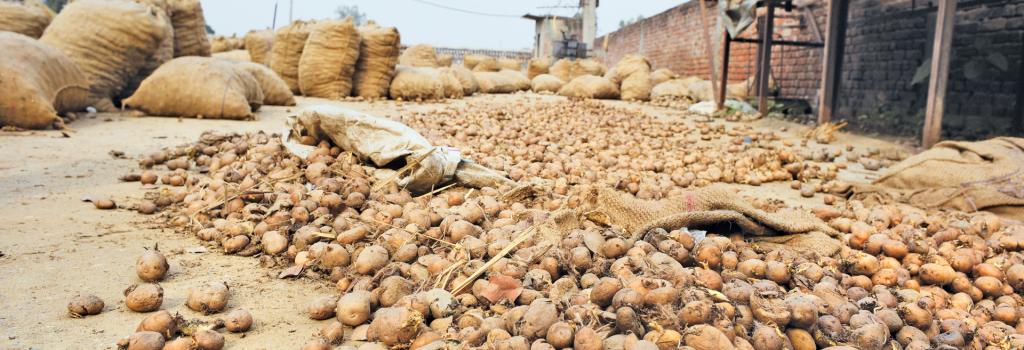5. Inadequate transport and Storage Facilities

One of the most significant challenges in Indian agriculture is the lack of affordable and efficient transportation. There are still lakhs of villages that are not properly connected to main roads or market centres nowadays.
The majority of rural roads are Kutcha (bullock-cart roads), which become impassable during the wet season. Farmers are unable to get their produce to the major market and are compelled to sell it at a cheap price in the local market. Linking each village with a metalled road is a massive undertaking that will require vast quantities of money to finish.
In remote places, storage facilities are either non-existent or woefully inadequate. Farmers are forced to sell their produce soon after harvest at market prices, which are almost always poor. Farmers lose their rightful income as a result of such distress sales.
The Parse Committee assessed 9.3 percent of post-harvest losses, with roughly 6.6 percent attributable to inadequate storage conditions alone. As a result, scientific storage is critical to reduce losses and to benefit both farmers and consumers.
There are currently a lot of companies involved in warehousing and storage. The Food Corporation of India (F.C.I.), the Central Warehousing Corporation (C.W.C.), and the State Warehousing Corporation are some of the major players in this endeavour. These organisations assist in the development of a buffer stock that can be used in an emergency. Since 1979-80, the Central Government has been undertaking a project to build a national grid of rural godowns.
Farmers near their fields, particularly small and marginal farmers, benefit from this initiative, which provides storage facilities. A concept to construct a network of Rural Storage Centres to serve the economic interests of the farming community has been recommended by the Working Group on extra storage facilities in rural areas.